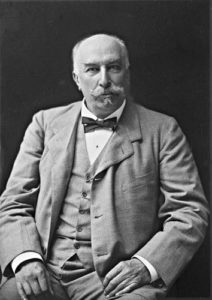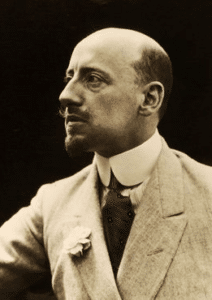Starting from the last two decades of the 19th century, Italy developed into a colonial power by forcing under its rule Eritrea and Somalia in East Africa, Tripolitania and Cyrenaica in North Africa (later unified in the colony of Libya) and the Dodecanese islands. From 2 November 1899 to 7 September 1901, Italy also participated as part of the Eight-Nation Alliance forces during the Boxer Rebellion in China; on 7 September 1901, a concession in Tientsin was ceded to the country, and on 7 June 1902, the concession was taken into Italian possession and administered by a consul. In 1913, male universal suffrage was adopted. The pre-war period dominated by Giovanni Giolitti, Prime Minister five times between 1892 and 1921, was characterized by the economic, industrial and political-cultural modernization of Italian society.

Italy, nominally allied with the German Empire and the Empire of Austria-Hungary in the Triple Alliance, in 1915 joined the Allies into World War I with a promise of substantial territorial gains, that included western Inner Carniola, former Austrian Littoral, Dalmatia as well as parts of the Ottoman Empire. The country gave a fundamental contribution to the victory of the conflict as one of the “Big Four” top Allied powers. The war was initially inconclusive, as the Italian army got stuck in a long attrition war in the Alps, making little progress and suffering very heavy losses. However, the reorganization of the army and the conscription of the so-called ’99 Boys (Ragazzi del ’99, all males born in 1899 who were turning 18) led to more effective Italian victories in major battles, such as on Monte Grappa and in a series of battles on the Piave river. Eventually, in October 1918, the Italians launched a massive offensive, culminating in the victory of Vittorio Veneto. The Italian victory marked the end of the war on the Italian Front, secured the dissolution of the Austro-Hungarian Empire and was chiefly instrumental in ending the First World War less than two weeks later.
During the war, more than 650,000 Italian soldiers and as many civilians died and the kingdom went to the brink of bankruptcy. Under the Peace Treaties of Saint-Germain, Rapallo and Rome, Italy gained a permanent seat in the League of Nations’s executive council and obtained most of the promised territories, but not Dalmatia (except Zara), allowing nationalists to define the victory as “mutilated”. Moreover, Italy annexed the Hungarian harbor of Fiume, that was not part of territories promised at London but had been occupied after the end of the war by Gabriele D’Annunzio.

Fascist Regime:
The socialist agitations that followed the devastation of the Great War, inspired by the Russian Revolution, led to counter-revolution and repression throughout Italy. The liberal establishment, fearing a Soviet-style revolution, started to endorse the small National Fascist Party, led by Benito Mussolini. In October 1922 the Blackshirts of the National Fascist Party attempted a coup named the “March on Rome” which failed but at the last minute, King Victor Emmanuel III refused to proclaim a state of siege and appointed Mussolini prime minister. Over the next few years, Mussolini banned all political parties and curtailed personal liberties, thus forming a dictatorship. These actions attracted international attention and eventually inspired similar dictatorships such as Nazi Germany and Francoist Spain.
